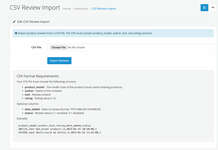The need to constantly innovate and offer pleasant experiences is increasingly important for companies. That’s why in 2024, it’s no longer enough to master the basics. You also need to know which UI UX design service tools can help improve customer experiences and push your skills to the next level. So while you hone your skills to stay competitive, here are the 13 best UI/UX tools that will help you create innovative designs in 2024:
Table of Contents
- Sketch
- Adobe XD
- Balsamiq
- Axure
- Figma
- InVision Studio
- Framer
- Origami Studio
- FlowMap
- Proto.io
- Marvel
- Optimal workshop
- Webflow
- Hire UI/UX designers from StarTechUP!
Sketch
If you’re a user interface designer, you’ve probably heard of Sketch. Not only is he popular, he’s practically a legend! Sketch is the go-to tool for designers, and it’s easy to see why.
Sketch is an all-in-one design toolset that covers the entire design process. With more than 700 extensions, it integrates perfectly with other programs. Equipped with a set of intuitive vector editing tools, it offers everything you need for a collaborative design journey, from initial ideation to delivery to the developer.
Although it was originally a Mac-only application, it now includes a web application accessible from any browser. However, a native Windows app remains unavailable.
Key features worth mentioning of Sketch:
- Easy-to-use vector editing and editable Boolean operations for smooth iteration.
- Infinite canvas, adaptable artboards, customizable presets, and grids for multiple screens.
- Variable fonts and OpenType for complete typographic control.
- Smart reusable components for a consistent design.
- Cross-platform tools for collaboration and live feedback.
Adobe XD
When it comes to the best UX tools, we cannot ignore Adobe XD. It’s Adobe’s offering for UI UX design services, and let’s be honest, Adobe is like design software royalty. So it’s no surprise that they offer an all-inclusive design experience.
Adobe XD gives you vector-based UI tools to create amazing prototypes and mockups. Plus, the interface will be familiar, like other Adobe programs, so you’ll feel right at home.
XD is part of the Adobe Creative Cloud suite, so you can expect it to be packed with features and functions to bring your designs to life. And the best? You can collaborate in real-time, making it the preferred choice of UI designers around the world.
Key features worth mentioning of Adobe XD:
- User interface kits: Apple Design, Google Material Design, and Amazon Alexa, among others.
- 3D transformations for depth and perspective (AR and VR possibilities).
- Components and states for fast and scalable design. Create, update, and sync UI elements effortlessly.
- Robust animation: video, Lottie playback, micro-animations, motion effects, scroll groups, anchor links.
- Voice prototypes: voice commands, voice playback, integrated voice functions.
Balsamiq
An esteemed wireframing tool, Balsamiq has stood the test of time, becoming a beloved staple in the UX/UI design world. Adored by designers, product managers, and innovators alike, Balsamiq steals the show as one of the best UI design tools out there.
Balsamiq combines the best of UI and UX, but what really makes it shine are its low-fidelity wireframes. With a deliberate choice of a hand-drawn and cartoonish style, he brings a playful and unique display of elements.
Balsamiq offers a wide range of UI controls and icons, both built-in and community-generated. With Balsamiq’s linking capabilities, UX designers create prototypes for demos or usability tests.
Whether you’re a beginner or a professional, you can easily create customizable templates, patterns, and component libraries for future designs. In fact, it is a very useful tool during the ideation phase thanks to its sketch aspect that encourages brainstorming.
Key features worth mentioning of Balsamiq:
- Compatible with Mac and PC
- Recreate the experience of drawing on a notepad or whiteboard
- More emphasis on structure and content than features
- Minimum learning curve
- Hundreds of integrated components
- Drag and drop function
Axure
Axure is the ultimate UI design tool that allows designers to create functional and realistic prototypes. With endless possibilities for event triggers, conditions, and actions, unleash your creativity to explore captivating digital experiences.
It is a powerful tool for creating UX documentation along with interactive prototypes. With support for mouse, touch, and keyboard events, you can trigger interactions and add conditions and variables to improve your prototypes.
Axure is also easy to use, especially with its handy widgets. For example, you can drag and drop text fields, drop-down lists, and radio buttons. Plus, with multi-state dynamic panels, you can create anything from pop-ups to scrolling and sliding mobile screens.
This tool is ideal for project managers who do not have design or programming knowledge. They can document any issues within the platform and get everyone on the same page, working toward the same goal.
Key features worth mentioning of Axure:
- Share prototypes instantly using the Axure Cloud feature
- Sync with Slack and Microsoft Teams for real-time updates
- Documentation and prototypes to improve the exchange between designers and developers.
- Update available for co-authoring, revision history, and team hosting.
- Seamless project delivery with extensive documentation, ideal for non-coders.
Figma
Figma is a leading collaboration tool for UI design, effortlessly bridging the gap between designers, developers, and project managers. It’s a game-changer in the world of UX tools, boosting collaboration and unleashing limitless creativity.
This browser-based UX design tool offers you a wide range of features, including wireframing. You’ll find component-based schematic kits equipped with an easy-to-use drag-and-drop interface. It’s very easy to insert, customize, and organize all the elements of your UI design.
FigJam, Figma’s collaboration environment, allows multiple designers to work simultaneously on a project. It’s like Google Docs, but for design. Get real-time information about who is online and actively working. See your team members’ progress and collaborate seamlessly.
Key features worth mentioning of Figma:
- Auto Layout for responsive design
- Perform Boolean operations for combinations of shapes
- Interactive editing at 60 fps to preview sharp designs
- Use Vector Networks pen tool for design
InVision Studio
InVision Studio is one of the tools in the InVision suite. It is accompanied by InVision Cloud, where you can connect, store and share your entire product design process. It has InVision DSM, a design systems manager, and a library to store and control all your brand and UX components.
InVision Studio simplifies communication for UI UX Design agencies. With collaboration features, it allows for instant feedback, real-time document updates, and a digital whiteboard for team collaboration and sharing ideas.
It is one of the most recommended tools for UX designers of all levels, as well as their collaborators throughout the product marketing organization. It is the ultimate tool for rapid prototyping and seamless approval processes.
Key features worth mentioning of Invison Studio:
- Rapid UX Prototyping with Vector Drawings
- InVision DSM centralizes brand assets for a single source of truth
- Organize approved assets for the content marketing team
Framer
Framer, formerly known as Framer X, is a powerful UX tool that provides realistic product examples and prototypes. It is one of the best options for professional UI designers as it offers an intuitive interface and minimal learning curve.
Framer prides itself on being “the only prototyping software based on web technologies.” It is an amazing browser-based tool with drag and drop features. You can start with a blank canvas and incorporate pre-made components and interactive elements to bring your prototypes to life.
It also includes tons of plug-ins that offer UI designers a wide range of features such as UI kits, players, and other useful components. With UI kits, designers can easily integrate social media channels like Twitter and Snapchat.
Key features worth mentioning of framer:
- Initial collaboration with JavaScript for development translation
- Allows you to create complex augmented reality and virtual reality prototypes
- Multiple UI tools for functional and usable prototypes
- React support for modern web design
Origami Studio
Origami Studio was meticulously crafted by Facebook specifically for its designers, incorporating a touch of complexity that sets it apart from others like Sketch or InVision.
This platform offers you an easy-to-use interface and all the tools you need to build complete prototypes. Thanks to a sophisticated patch editor, designers have the opportunity to integrate advanced features. The final result? Prototypes that look and function like a real application or web page.
However, since it was initially created for Facebook designers but is now available for free, it has a bit of a learning curve. This can make it a complex prototyping tool for beginners.
But do not worry; Origami Studio is one of the most advanced UX design tools on the market that brings your designs to life with realistic interactions. Plus, it integrates perfectly with Sketch.
Key features worth mentioning of Origami studio:
- Build logical prototypes with the patch editor
- Access the patch library in real time for great functionality
- Copy and paste Sketch layers seamlessly
- All in one for prototyping, design, and animation
FlowMap
While many other tools try to combine UI and UX into a single platform, Flow Map focuses exclusively on the art of UI UX Design Services.
Flow app provides an easy way to map user flows using a low-fidelity, wireframe-style approach. You can easily create diagrams using shapes, lines, and icons. It’s perfect for visualizing the user journey, from beginning to final conversion goals.
The nice thing is that it allows you to iterate over a traditional sitemap in the form of a tree diagram while offering Trello-like features to track status.
Key features worth mentioning of Flowmap:
- Includes user research features
- Easy-to-use sitemap tool with collaboration support
- The Personas feature helps in creating buyer personas
- Organization chart tool for project collaboration, planning, and communication
Proto.io
Proto.io is undoubtedly one of the few UI and UX design tools that allow you to create high-fidelity prototypes with ease. It has really established itself as a competent software.
Proto.io equips designers with a comprehensive set of tools to organize, create, and test accurate mockups. Streamlines collaboration and enables fluid communication through video comments.
When it comes to integrating with testing tools, Proto.io integrates seamlessly with leading market testing tools such as Lookback, Userlytics, and Validately.
Key features worth mentioning of Proto.io:
- 1,000+ customizable templates for web and mobile
- 250+ UI components and 6,000+ digital assets
- Plugins for Sketch, Figma, Adobe XD, and Photoshop
- Various interactions: tactile, gestural, transitions
Marvel
Whether you’re an experienced UI designer or just getting started in the role, Marvel’s design platform makes the design process a breeze.
Thanks to its simple design and prototyping tools, creating wireframes, designs, and prototypes is a breeze. Generate design specifications instantly and connect integrations to supercharge your workflow. And if you’re part of a large team, Marvel Enterprise 3 is here to help you create exceptional products at scale.
Marvel design software has a slight learning curve, making it very effective for efficient prototyping and interface design.
Key features worth mentioning of Marvel:
- Prototypes, deliveries, and rapid tests
- Integrates with Sketch, Jira, Maze, Smartmockups, etc.
- Use gestures to create prototypes
- Handoff includes HTML/CSS for developers
Optimal workshop
Optimal Workshop is the ultimate toolbox for UX research, bringing together 5 amazing tools in total:
OptimalSort: Card Sorting for Information Architecture Planning
Treejack: Evaluate website navigation and information search
Chalkmark: One-click testing tool for an intuitive interface
Questions: Create online surveys and add screening questions to capture the right participants.
Reframer: Organize information from qualitative research
The strength of this design platform lies in its ability to test and evaluate the usability, accessibility and intuitiveness of a website or app. Its solutions accurately measure the user experience of companies in various sectors.
Key features worth mentioning of Optimal workshop:
- Integrated tools for professional UX designers
- Create surveys, tests, focus groups, and interviews to gain insight into your user research.
- Get detailed data about users and how they interact with your design.
- Design easy-to-understand reports
Webflow
With Webflow, design like a pro without needing any knowledge of HTML or CSS. It features intuitive drag-and-drop functionality that allows you to create stunning user interfaces effortlessly.
When you use Webflow to create a prototype, you’ll need to create a real website that generates precise HTML, CSS, or JavaScript code for micro-interactions. This saves you time. Instead of taking what’s sketched out in a prototype and building a design from scratch, you already have everything you need to hand the HTML code to a developer.
Webflow is a super scalable UI design tool that comes with a fast, reliable, and hassle-free hosting network. And if you don’t feel like starting from scratch, you can also use one of their templates!
Key features worth mentioning of Webflow:
- Generate CSS, HTML, or Javascript for micro-interactions
- Instant start with various UI templates
- Supports CMS for SEO, social networks, and content marketing






